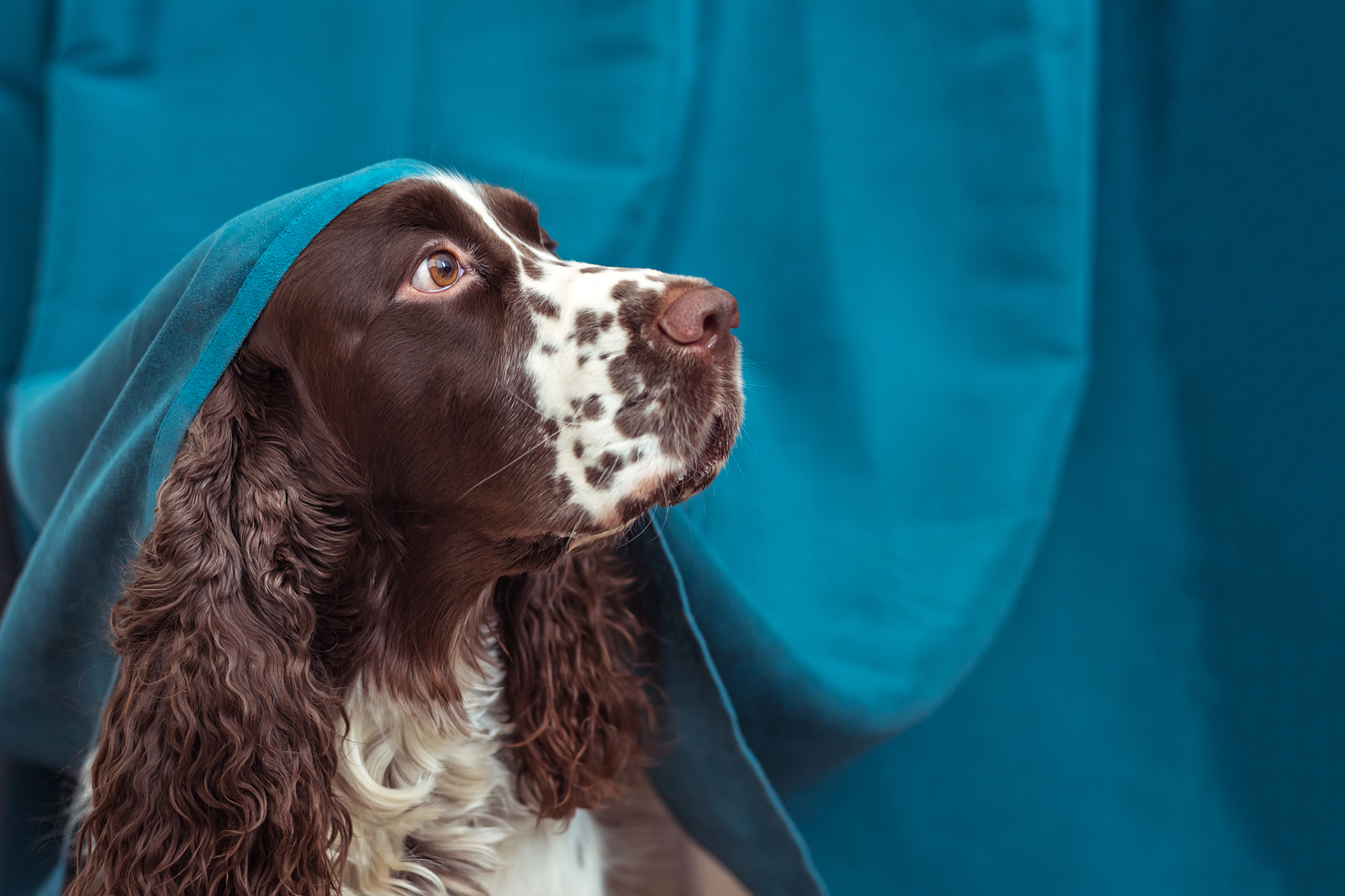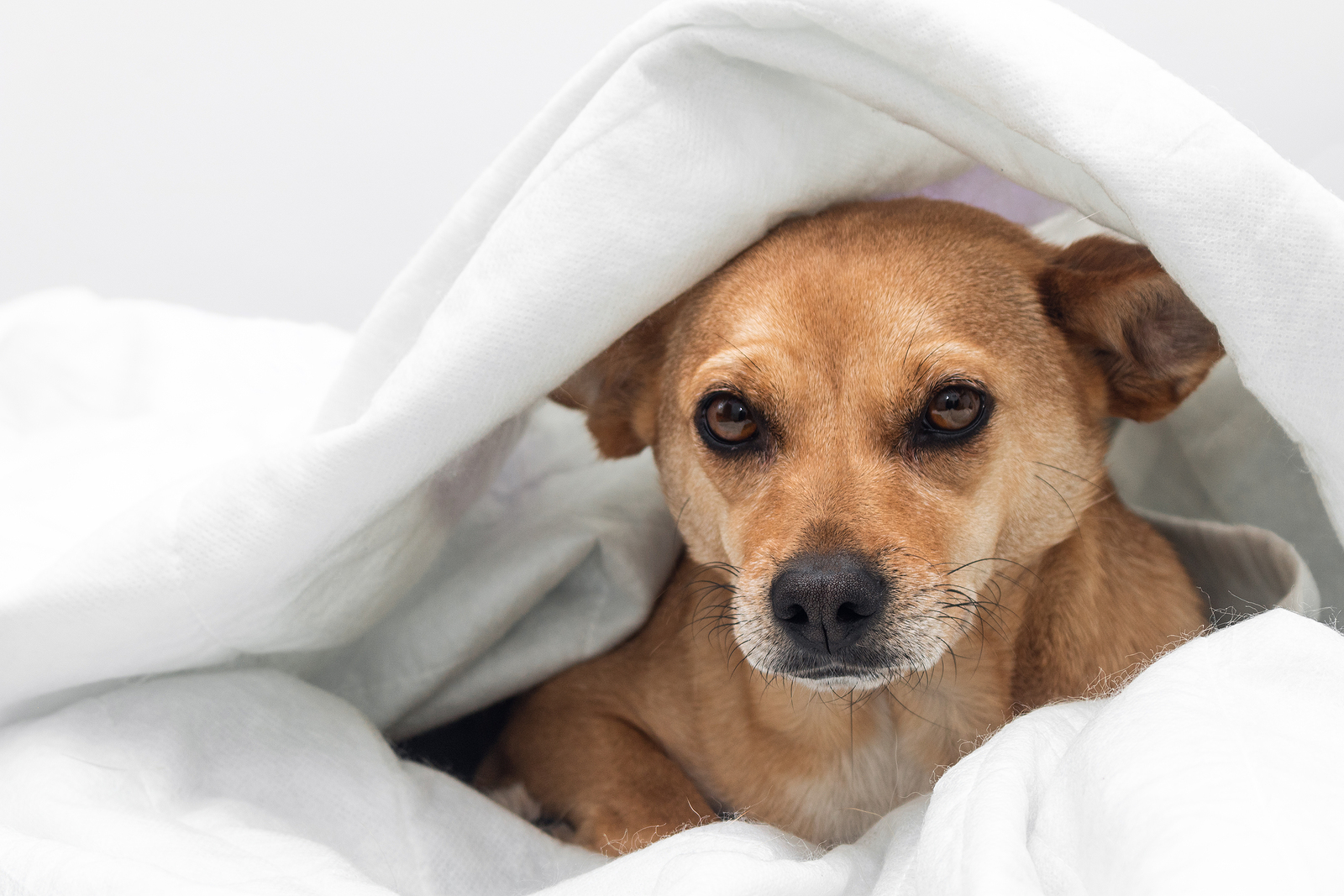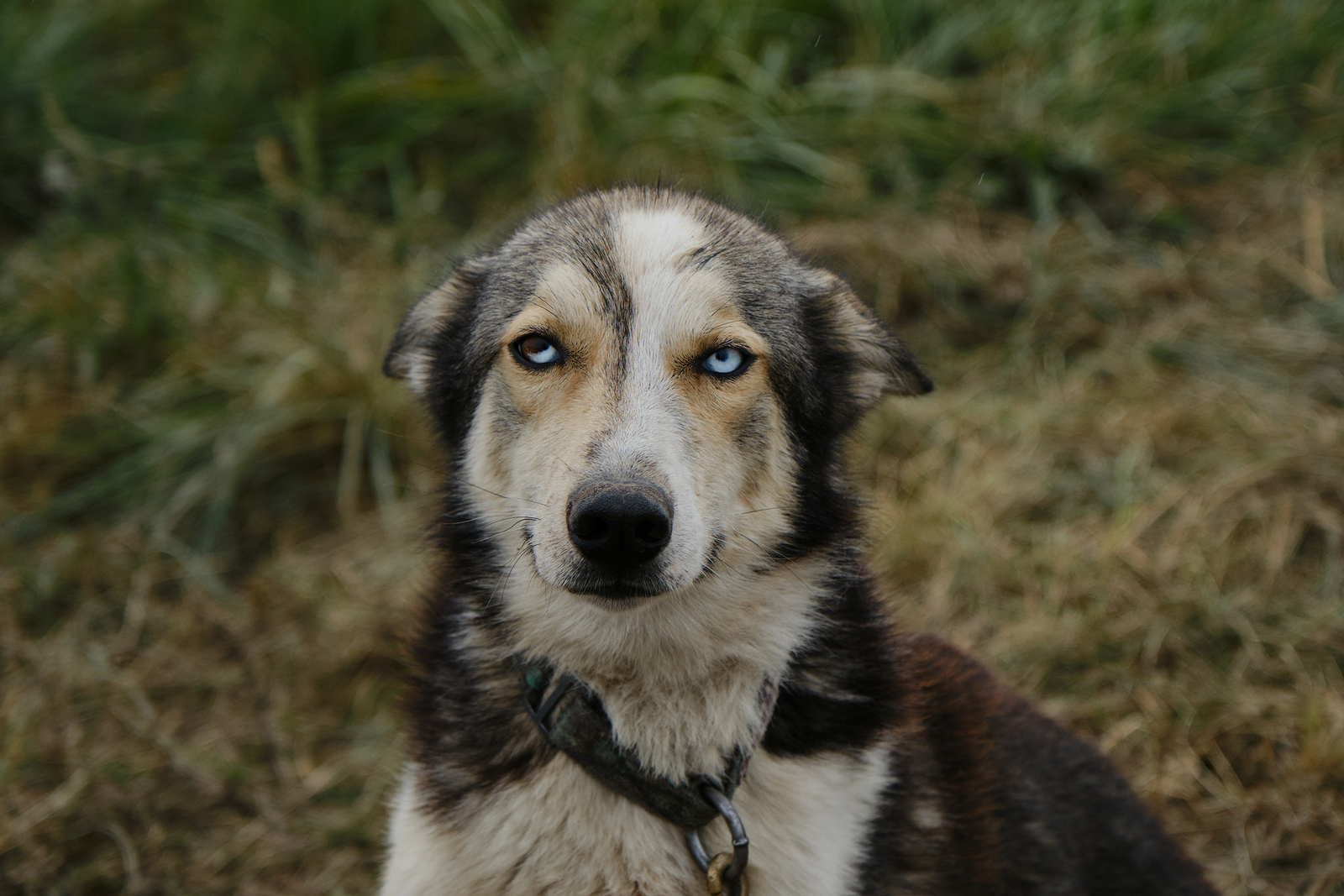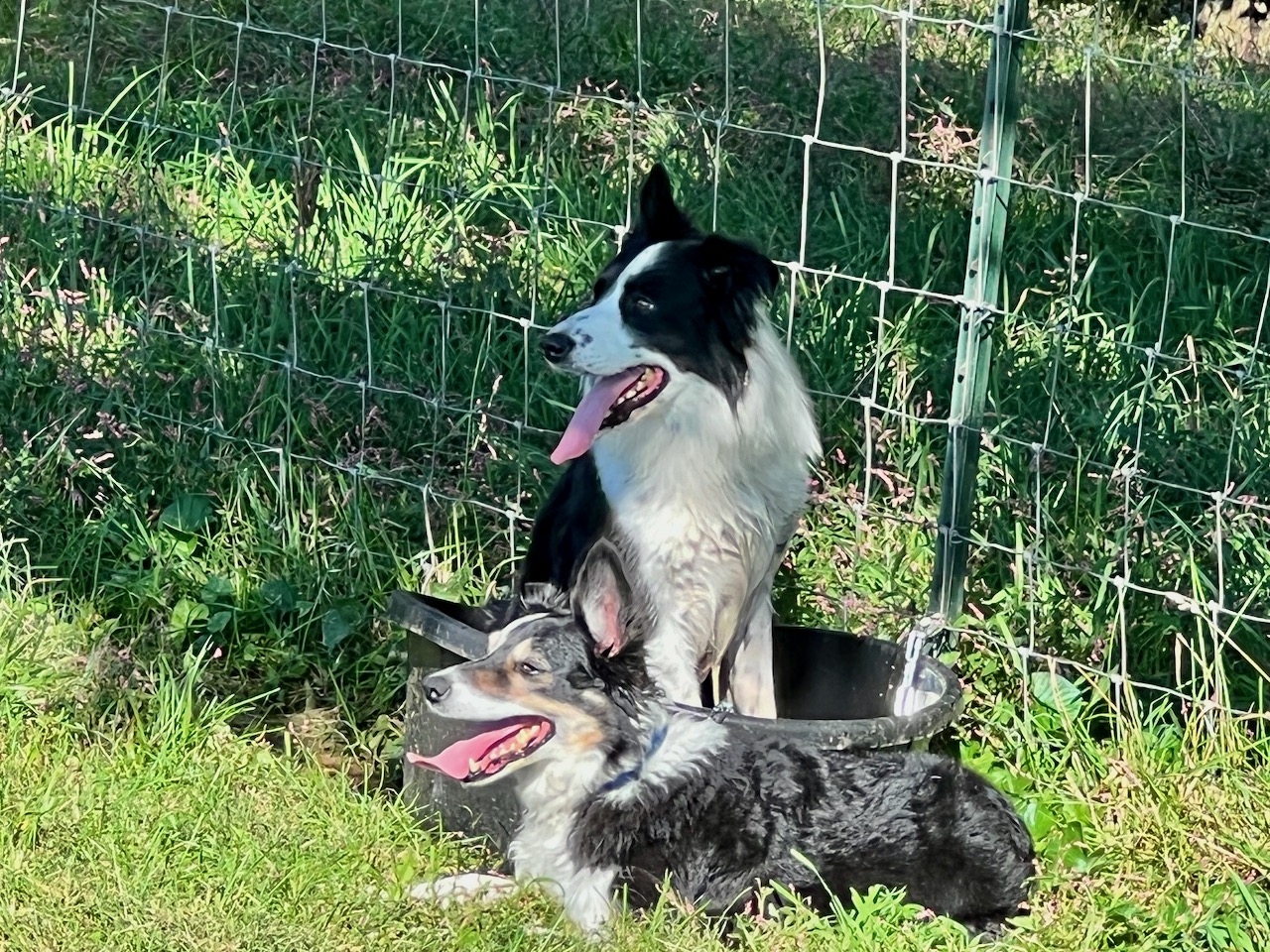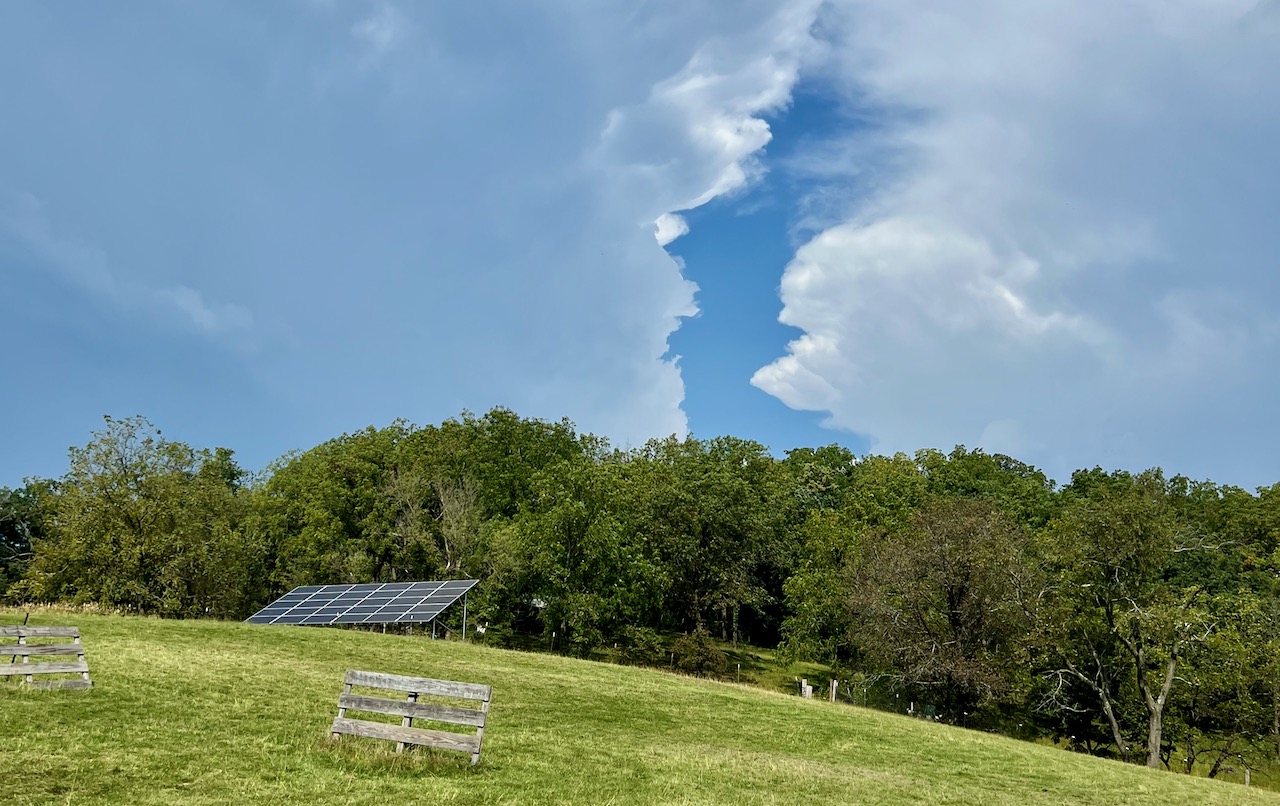“Oh no, he’s just fine! Go ahead and pet him.” If I heard that once, I heard it a thousand times, from owners anxious for me to pet their dog, while their dog begged me not to. Of course, the dogs didn’t say so, but their body language spoke volumes. Mouth closed, stiff bodied (even if the tail tip wagged), head down and averted–these dogs were the equivalent of an introvert about to be hugged by a drunken stranger at a noisy party. Except the dogs couldn’t escape. So I didn’t pet them; but I had to spend no small amount of energy convincing the owners that I was honoring the request of the dog, not because I was afraid or uncaring.
These owners loved their dogs, deeply. If they didn’t, they wouldn’t have devoted the resources–time, energy, and money–to see an applied behaviorist. They just weren’t as good as dogs are at reading non-verbal cues. And that’s pretty much the state of the world, isn’t it? I’ll never be as good at reading Skip or Maggie as they are at reading me. Surely there are a lot of reasons for that, but I suspect one important one is that verbal language doesn’t get in the way of dog’s perceptions of us. What else do they have to go on besides our tone of voice and body language? (Of course, I don’t mean to negate the fact that dogs can and do learn a vast number of words, but try saying “Bad Dog” to your own in a high, happy voice and see whether tone or the actual word itself has more power.)
I’d like us to have a conversation about what resources have helped you learn to “read” dogs better, and what we can do to encourage professionals–trainers, veterinarians, behaviorists–to better educate the dog-owning public. But first, I thought I’d mention what got me thinking about this. Author and trainer Melissa McCue-McGrath and I were talking about a talk she was about to give at the Animal Behavior Society on stress and dogs, and she mentioned a study that found that a measure of long-term stress, the amount of cortisol in the hair, correlated between owners and dogs. There was no effect of activity level or the number of training sessions. But, most interestingly to us, personality tests on both species found that anxious owners tended to have anxious dogs, but not the other way around. (I’m using the term “anxiety” relatively loosely, to indicate factors on the personality tests that indicate what is now called “emotional resilience.”) Anxious dogs didn’t tend to have anxious owners.
Why would that be? Our hypothesis is that dogs are better at picking up signs of anxiety or concern from us than we are from them. That can lead to what’s called “emotional contagion,” a well-documented phenomenon whose definition is in its title. (See more on this and its relation to us and dogs in a previous post, Anxious Owners, Anxious Dogs? from September of 2021.) In other words, we get nervous, our dogs get nervous. Dogs get nervous–we often miss the signs of it. But learning to better read our dogs can lead to better relationships, and avoid so many behavioral problems, that it feels more important to me than teaching people to teach their dogs to sit or stay.
So here’s the question: What resources helped you most of all when learning to read your dog’s internal state or predict his or her next behavior? I’ll list some here, but would love to have a group think about all the resources out there in the world to help owners learn to observe and interpret their dog’s body language. Before listing some resources in hopes of inspiring you to list others, I’ll first mention that I’m begging the dog training world to incorporate reading canine body language into its curriculum. What is more important? Your dog “telling” you that being forced to sit beside Misty for the Christmas card photo is going to get him bitten, or teaching your dog to do a perfect heel? I know lots of classes teach a lot about reading dogs–tell us about the ones you know about or teach yourselves.
In terms of resources that “translate” dog body language, I’ll just quickly mention my 5.5 hour Lost in Translation seminar (which can be streamed now if you’d like), which has a lot of slides and videos designed to help educate.
Dogwise.com is a great resource for finding books about reading dogs, including the classic On Talking Terms with Dogs, Canine Behavior, an Illustrated Guide, by Barbara Handelman, Doggy Language, by Lili Chin, an A-Z Ethogram of Dog Behavior and Body Language by Sue Sternberg, and Canine Play Behavior, by Mechtild Kaufer. I know that’s just a start.What book(s) or videos have you found especially useful?
Can we ever be as good as our dogs at picking up subtle signals of internal emotions? I don’t think so, in part because of the reason I suggested early on: Once you have language, it’s hard to focus as intently on other ways of communicating. And besides, what else do dogs have to do all day, anyway, but spend their time trying to figure us out? I’m sure there’s more to it–perhaps we humans have lost some of our ability to observe as accurately as we once could as a species. At least, most of us. All I can say is that I’ve seen sheep who could read a wisp of hesitation in a dog long before I had any clue that the dog was losing confidence. You can watch sheepdogs on their outruns, looking for the lead sheep from one, two hundred yards away, before any of the sheep have even picked their heads up from grazing. Other animals are REALLY good at it. We’ll never get to their level, but all of our companion animals would be so much happier if we could improve our abilities.
What resources have you found most useful? And how can we encourage more education of owners? I can tell you that every time I’ve heard an applied behaviorist asks “What is the one thing you wish more dog owners knew,” it’s always about encouraging and educating people to observe and “read” their dogs better. I’d love to hear what you have to add to the conversation!
MEANWHILE, back on the farm: Yesterday, was a truly wonderful day. We spent the day at Counting Ewe Farm, helping out at a Novice Sheepdog Trial hosted by the gracious Victoria Peterson and her husband Vince. In spite of a downpour, it was a great day, compassionately and helpfully judged by Tresa Laferty, and well run by course director Randy Rohr. Competing in sheepdog trials is hard. And stressful–no one wants a dog losing control and chasing sheep around a field; especially if it is your own. This kind of trial is invaluable–in which the pressure of a big trial is off, and everyone is encouraged to help their dogs in anyway they need. (Remember at these trials, you have to stand at a post and not leave it for much of your run, no matter how far away the dog and the sheep are.) It was a great experience for everyone I think. And some of the young dogs and novice handlers did some great work. Kudos to all.
I didn’t get any photos, sorry–too focused on doing our work, but here’s one of Skip and Maggie after a training session at the farm a few days ago. They are both trained to be quiet and comfortable tied up to a fence while the other dogs works. (This factoid is relevant for the next paragraph.)
Our job at the trial was to either gather sheep off the field after each run and move them to a resting place, or to set out sheep for each run–meaning to herd each group of 4 sheep away from the handling system where their friends are and move them, quietly and with little stress, to the “set out” point where the competing dog will be sent to gather them up and bring them to the handler. We also got to move groups of sheep from one end of the field to the other, a very different job than to move just 4 sheep at a time.
First: I had a ball. I love doing real work with my dogs, and with 14 sheep and a tiny farm, I don’t have enough of it. Skip especially adored every minute of it, including working unprotected for an hour or so in a heavy rain. I don’t think I’ve ever seen him so happy for such a long period of time. Doing that kind of repetitive work, where the dog learns the job quickly and can do it with little instruction much be so much less stressful than a run during a competition. It was also good for his heart: Work then rest, work then rest, work then rest, rinse and repeat. He went all day long and never got tired, even trying his hardest to get Maggie to play last night. (She and I were equally tuckered I think. No one could’ve gotten me off the couch after dinner.)
Maggie had a great time in the morning, trading off with Skip on either task. I was so proud of both of them… for much of the day I had to have one dog tied up to a fence while I worked the other, sometimes 250 yards away. They were soooooo good… lying quietly until I returned, no barking or chewing or digging. Just waiting patiently for their turn.
However, after lunch the rains came when Maggie was tied up to a fence at the bottom of the course, and I was working Skip at the other end. It began raining lightly, then hard, while Skip and I (my raincoat safely stashed in the car, the one with the moon roof open) were a long way away, setting out sheep. There really was nothing to do but just get wet. It’s just water anyway, right? When it was time to go back down to the other end of the field, I got down to Maggie as fast as I could. And there she was, tied to the fence in a downpour, the dog who HATES rain, and would rather her bladder explode than pee in it. Her head was flattened in the grass, her ears flat, and her eyes squinted into little slits. I guarantee you I could not repeat what she would have said, if she could, on this forum. Princess Margaret was NOT HAPPY. I ran her to the car, toweled her off, closed the moon roof, thanked heaven for leather-ish car seats instead of fabric, threw my raincoat on over my sopping wet clothes, and went back to work.
Skip couldn’t have cared less. Although . . . there was one point in which I noticed that a tent where others were huddling out of the rain wasn’t too far away, so I left the pen where we were waiting for the next batch of sheep, and stood there too for a few minutes. I swear Skip, himself sopping wet and unprotected, gave me a side eye on the other side of the fence. I thought: Who am I to leave my dog in the pouring rain while I go under a tent? So I went back out again, and told him we were in this together, every moment. All I can say is that I’ve never seen him so happy for so long, doing his little skippy-skip dance (which some day I’ll get a good video of!) every time we finished a job.
The drive home was gorgeous, with dramatic cloud formations all the way back. Here’s from home a few days ago, just as thunder began to roll, and I got me and the dogs back down the hill and inside.
It’s so very much fall here, such a beautiful time! I especially love the Zinnias in the yard right now, their colors are so intense, and I’m so aware that the color is draining away, leaf by leaf. I try to suck it up as much as I can before the season of black, white, and brown begins.
The fall asters are blooming too, and the bees are loving it. Sadly, I’ve seen fewer butterflies than usual, but the bees are all over the yard now, several different species of them. When I’m weeding I am surrounded by busy bees, their buzzing like music to my ears. I know they won’t bother me, even though we are working just inches from each other, because I am no threat to them. Here’s a Bumblebee working hard to store up food for the winter to come.
What’s good in your world? And join our conversation about great resources to educate us on canine body language, I look forward to your additions.
